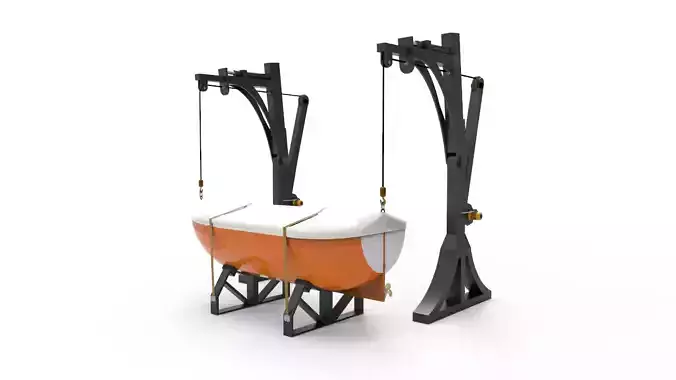1/7
A lifeboat is a specially designed watercraft used for rescue and evacuation purposes during emergencies at sea. It serves as a crucial safety measure on ships, offshore installations, and coastal areas to ensure the protection and survival of individuals in distress.
Lifeboats are constructed to withstand harsh marine conditions and are equipped with various features to ensure their effectiveness. They are typically made of sturdy materials such as fiberglass, aluminum, or steel to provide durability and resistance against rough waves and impacts. The hull of a lifeboat is designed to be buoyant and self-righting, allowing it to remain stable and upright even in challenging sea conditions.
One of the key features of a lifeboat is its capacity to carry a specified number of occupants. Lifeboats are available in different sizes, ranging from small inflatable boats to larger enclosed capsules capable of accommodating dozens of people. The seating arrangements in a lifeboat are designed to maximize space while providing secure and comfortable seating for the occupants.
Lifeboats are equipped with essential safety equipment to aid in rescue operations. This includes life jackets or personal flotation devices for each occupant, signaling devices such as flares and whistles to attract attention, and communication systems to establish contact with other vessels or rescue authorities. Additionally, lifeboats may be equipped with survival equipment such as food, water, medical supplies, and thermal blankets to sustain the occupants until rescue arrives.
In emergency situations, lifeboats are launched from their stowed positions on ships or offshore platforms. They are designed to be easily launched and maneuvered in the water, allowing for efficient search and rescue operations. Lifeboat crews are trained in handling and operating these vessels, ensuring they can navigate safely through rough seas and reach individuals in distress.
Lifeboats play a critical role in maritime safety and have saved countless lives throughout history. They provide a means of escape and survival during emergencies such as shipwrecks, fires, or other disasters at sea. Regular maintenance, inspections, and drills are conducted to ensure the readiness and effectiveness of lifeboats in emergency situations.
In conclusion, lifeboats are vital rescue vessels that provide a safe means of evacuation and survival during emergencies at sea. With their robust construction, capacity for occupants, and essential safety equipment, lifeboats serve as a lifeline for individuals in distress, ensuring their safety and well-being in challenging marine conditions.
REVIEWS & COMMENTS
accuracy, and usability.







